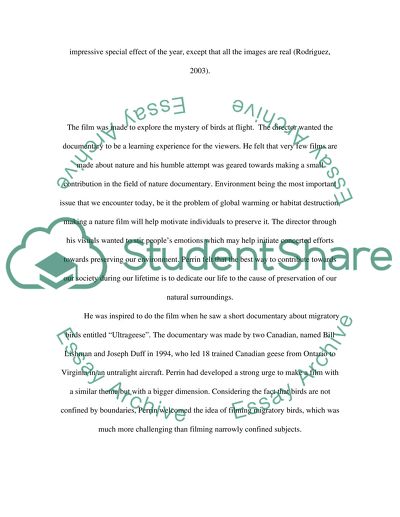Cite this document
(“Winged migration: the making of the documentary Essay”, n.d.)
Retrieved from https://studentshare.org/visual-arts-film-studies/1510301-winged-migration-the-making-of-the-documentary
Retrieved from https://studentshare.org/visual-arts-film-studies/1510301-winged-migration-the-making-of-the-documentary
(Winged Migration: The Making of the Documentary Essay)
https://studentshare.org/visual-arts-film-studies/1510301-winged-migration-the-making-of-the-documentary.
https://studentshare.org/visual-arts-film-studies/1510301-winged-migration-the-making-of-the-documentary.
“Winged Migration: The Making of the Documentary Essay”, n.d. https://studentshare.org/visual-arts-film-studies/1510301-winged-migration-the-making-of-the-documentary.


